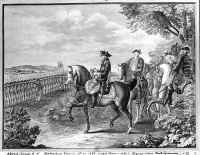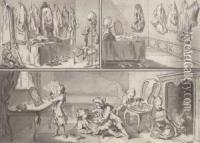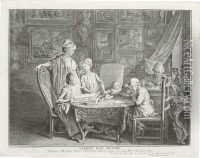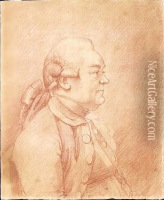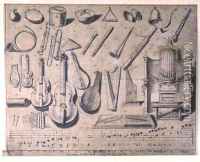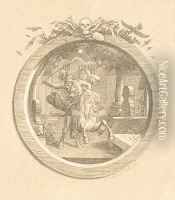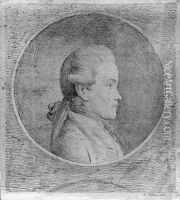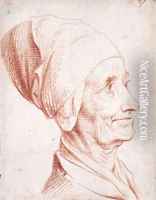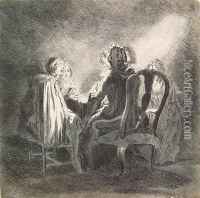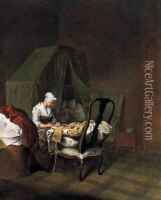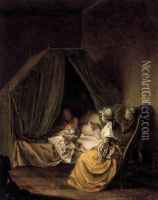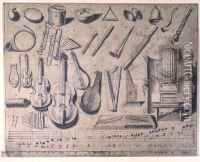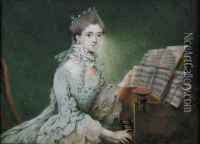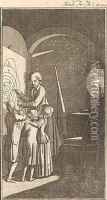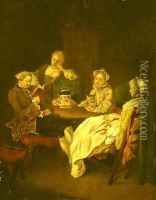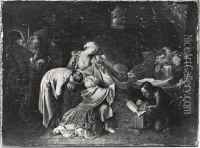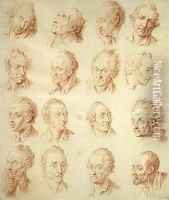Daniel Nikolaus Chodowiecki Paintings
Daniel Nikolaus Chodowiecki was a prolific Polish-German painter and printmaker, who is often considered one of the most important and influential artists of his time in Germany. Born on October 16, 1726, in the Free City of Danzig (now Gdańsk, Poland), Chodowiecki came from a family of Polish nobility that had fallen on hard times. Despite his noble roots, Chodowiecki's early life was humble, and he initially apprenticed as a merchant in Danzig before turning to art.
Chodowiecki moved to Berlin in 1743, where he began his art career as a self-taught artist. He initially worked as a miniaturist and illustrator, but he soon earned a reputation for his delicate and detailed engravings. His prints and illustrations were highly sought after, and he became well known for his depictions of contemporary life, as well as for his illustrations of literary works, such as those by Lessing, Goethe, and Rousseau.
Throughout his career, Chodowiecki produced an enormous body of work that included engravings, etchings, drawings, and paintings. He was particularly famous for his genre scenes, which often depicted everyday life with a keen eye for detail and a touch of humor. His works were not only artistic achievements but also valuable documents of the social and cultural life of the period.
Chodowiecki was also active in the Berlin art community and contributed to the development of the Berlin Academy of Arts, where he served as director from 1788 until his death. He was instrumental in advancing the academy's role in the promotion of the arts and the education of young artists.
Despite his success, Chodowiecki remained a modest and approachable figure, renowned for his work ethic and his dedication to his family. He continued to produce artwork until the end of his life, passing away on February 7, 1801, in Berlin. Today, Chodowiecki's legacy lives on, and his works are preserved in several major museums, including the Alte Nationalgalerie in Berlin and the National Museum in Warsaw. His contributions to the art world continue to be celebrated for their historical significance and artistic excellence.
